|
As I have written before, I am trying to get recognised as a textile artist instead of a craftswoman by the authorities. Germany, and indeed some other countries, have legislation in place that provides cheaper health insurance, a modest pension and tax relief for artists. For as long as I have been self-employed, I have been treated like any other small business. That's not really fair when you know that I often can't even charge the legal minimum wage of €8,83 per hour. To give you a sense of perspective here: when I was a self-employed archaeozoologist, I charged €65 per hour like everybody else. Most people who know me and my embroideries thought it would be easy to get this formal recognition as an artist. Unfortunately, that has not been the case. And as my latest down-turn is so hilarious, I am going to share it with you. So what happened? My official application was finally, after a round of corrections, turned down. However, I was allowed to appeal. One of the things the authorities criticised was my lack of recognition amongst fellow artists. So I decided to join the Fiber Art Network (FAN): a great place to learn about grants and exhibition opportunities. This will certainly help me in the near future! Then I applied to the TAFA-List (Textile Art and Fiber Art List) to be included. As this is a vetted list, it has a little more credibility than FAN. And the list's curator Rachel Biel, has been very helpful in suggesting a few changes to my website in order to make it more obviously art. Unfortunately, I have not been able to find a German association for textile artists. So I applied for membership at a local artist society. And then things went bonkers! I wrote them a lovely email explaining who I am and what I do. What I would like to achieve artistically in the future and how I thought membership could help me achieve this. It was followed by 14, yes FOURTEEN, days of deafening silence. I decided to re-send my original email, minus the pictures; after all you never know if they had clogged up their email boxes :). I promptly got a reply. I was told that 'after lengthy discussions' they had turned down my application as my embroideries are of very high quality but firmly belong in the realm of craftsmanship or are at best 'applied art'. Not 'real art'. Wow, that dampened my spirits. A nagging self-doubt emerged. Luckily I kept my wits about me and started thinking about the whole difference between craft, applied art and 'real art'. I perfectly know that not all my embroideries are automatically 'real art'. For me, a piece of art is art because it has different layers of meaning. So, I wrote a second email. In that email, I asked them to consider the new project I am working on depicting the pope and the encrusted pebble memory stones I make when beloved people pass on. I firmly believe they are ART. And this is the reply I got: Dear Mrs Grimm, Not only for us, but especially here in Bavaria, embroidery is a traditional craft. Your work is really very beautiful and also original, but clearly limited to the tradition of this craft. …. When you would like to mingle with artists, you are very welcome to attend our courses in figure- and portrait drawing or any other course that we will offer in 2019, for instance structures in oil or acrylic. We will publish these new courses on our homepage in January. Please don’t be blue, but we won’t ever exhibit stitched saints – not even when they are so very imaginative- as part of our group exhibitions. Chairwoman of the Artist Society Tusculum in Murnau Is she seriously suggesting I should take up drawing or painting so as to further my artistic developement? As the Dutch say: This makes my trousers drop! Then I realised that she excludes all textile artists that use embroidery from ever creating 'real art'. And that's when my self-doubt melted away completely. And I had a good laugh. Although I used to be impressed by this particular artist society, several of its members have attended art school, I now know that they have really limited and prejudiced views when it comes to art.
As you can probably imagine, this whole process is draining me. I am even battling with a cold; the first one in several years :). And although I know I will learn and grow through this experience, I do not have to like it, now do I? But it has helped to understand some of the other experiences I have had over the past seven or eight years in both Germany and my native Netherlands. Up until recently, I tried to be accepted by the artisans. This never really worked. Some fellow craftspeople reacted with suspicion to my embroideries. Visitors of high-end craft shows were openly hostile towards me and my work. Both groups repeatedly commented that my work has nothing to do with 'traditional embroidery'. They made it clear to me that I don't belong. Ironically, the 'other side', the artists, say I don't belong either. So what will I do? I did write my appeal to the authorities. I am pretty sure they will turn me down again. In the meantime, I will make camp on the fence and get to grips with the fact that I don't belong in either camp. I will keep creating my art embroideries and I will connect with fellow textile artists through FAN and TAFA. There is music in me that seeks a canvas. It will flow through my fingers onto that canvas using a needle and not a brush!
33 Comments
Wow, where did the summer go? We had a lovely 26 degrees yesterday and only 6 this morning... We will even see the first night frost this week! Time to re-home my lovely flowering tropical plants from the balcony to the windowsill :). The cooler temperatures are also a perfect excuse to stay indoors and start a new embroidery project. As I really want to be recognised as an artist instead of a crafter, I need to start making original artwork again. For the past months, I have been thinking about a theme for my upcoming solo-exhibition in August 2019. I seem to be rather good at getting brilliant ideas in the middle of the night :). Luckily for me, I am pretty good at getting back to sleep after these nightly strokes of genius. My husband has a far harder time. After all, I have to tell someone, right? I am planning to make a few embroidery pieces in the style of St. Laurence. Using 16th century goldwork embroidery techniques and artistic language. But addressing modern-day issues like immigration, climate change and consumerism. All unmistakably linked, by the way. First up is Pope Francis. Ever since his disarming 'Buona Sera', I have been fascinated by this man. But what probably fascinates me even more, is how we all seem to project our hopes and dreams on this one man. Francis should address climate change, the role of women, homosexuality, world peace etc. And 'pronto', please! The inconvenient truth however is, that one man, even when he is the pope, cannot accomplish this on his own. Are we willing to help him? To show how our projections tend to make Pope Francis larger than life, I've given him a few extra arms. Like many Hindu Gods have. Two arms and hands form what is called the 'Kanzlerraute', the typical 'everything will be all right' posture Angela Merkel often shows. The background will be closely modelled after an orphrey from a chasuble made between AD 1520-1525 in the Northern Netherlands and now held at the Catharijne Convent under inventory number BMH t2911. I am very grateful for this museum to have given me free access to several high-resolution images of this magnificent piece.
That's all for now. I will spend the rest of the afternoon transferring the design onto 40ct natural linen by Zweigart using a normal lead pencil. After having had a sore arm for three days thanks to 1ml of immunisation fluid, I was hit hard again. Obtaining a visa for China will set you back a whopping €286! So when I received my passport back I was hoping for something sparkling. A little gold dust perhaps? Nope. It is a rather ordinary looking sticker.... Luckily the mailman brought me some promotional material concerning the museum and Hangzhou to cheer me up. Especially the museum and the West Lake look very pretty! Preparing for China means I don't have much time to do some stitching. I still need to make instructional videos from the footage I shot whilst stitching the class samples. This means I am learning to use Adobe Premiere Pro and video platform Vimeo. Quite fun actually. The first eight videos concerning the crewelwork pomegranate are up there. And then there is another major thing that gets in the way of stitching: the garden. Whilst the rest of Germany and indeed most parts of Western-Europe had a severe drought this summer, the Alps had a good summer. This means that our 'Belle de Boskoop' is having a bumper crop. Normally, this tree has a hard time coping with the harsh alpine climate and only gives us miniature very hard green fruits. However, it seems we now have a climate change winner here. My kitchen turns into an apple processing plant most days. So far me and my husband have made several pies, Lithuanian apple cheese (google it!) and apple sauce. On top of that, we have the larder full of beautiful pumpkins and herbal teas. I am very grateful for nature's bounty!
Back to making more apple sauce :)! With a bit of luck I will get my passport back this week stamped with a shiny visa for China! Getting one was my first encounter with Chinese bureaucracy :). I will also see my doctor tomorrow for a refresher jab to protect me against nasty diseases. We embroidery artists lead exciting lives! Although I am not sure if I am an artist. I have been denied this title by the German authorities. They basically say that embroidery is not an art form, but firmly belongs in the realm of craftsmanship. At first I was knocked off my feet by this, but now I am preparing to defend my case. Getting recognition as an artist means that I am able to afford social security fees again and that my health insurance bills are almost cut in half. This would mean that my business could finally make a modest plus instead of a monthly loss... What you see here is the kit for my week-long series of workshops at the National Silk Museum in Hangzhou, China later this year. As the workshop-series is open to anyone, it is highly likely that I will have a wide variety of abilities in my class. Apart from the four techniques (Appenzeller whitework, crewel, goldwork and Schwalm), they will have four pieces of Aida band on which they can cross-stitch the names of the techniques. The bands are later used in construction to hide the seams between the different fabrics. Although it is highly likely that there are people in my class who have never done cross-stitching, explaining is easy and people can soon work on their own. With 15 people in class, I won't always be immediately on hand. Having something easy on the side you can always return too whilst waiting will probably come in handy. One thing I have learned over the years is that people mean wildly different things when you ask them to bring fine-tipped embroidery or craft scissors. Especially beginners manage to bring whopping big blunt paper scissors for goldwork classes. I have therefore included a pair of decent craft scissors in my kit. It is exactly the same pair of scissors I bought all those years ago when starting the RSN Certificate as an absolute beginner. And they are still my favourite goldwork scissors! Thanks to Google Images, I found my non-name scissors and was able to buy them for my Chinese students. As the kit includes many different materials, I packed each project separately. I printed a picture of the finished project onto re-usable labels. This makes them easily identifiable for non-English speakers and people can re-seal the bag and so keep supplies together. All kit materials will be packed together into a paper bag. I will urge each student to write her/his name onto the bag to avoid misunderstandings.
I've also included a shower-cap into the kit. The museum will provide embroidery hoops with seat frames for each student. The free shower-caps you often get in hotels are perfect to protect your work when you are not actively stitching. The other thing I have included is a simple goldwork cutting board. It is one half of a round plastic containers my dad used to house his screws, bolts and whatnots in. I lined the base with a piece of red velour and presto you have a cutting board. If I had more space in my suitcase, I would prefer to give each student a small round tin (I always upcycle my hair-clay tins this way!). Being able to cut your threads and then screw the tin close is even better. What else will I have at my disposal in the classroom? I've asked for an iron an ironing board. After all, I had to fold the fabrics to be able to get them into my suitcase. In preparation, I have already drawn all (bar one) patterns onto the fabric using a normal lead pencil. Unfortunately, the lines of aqua trick markers might not be stable when flying. I landed in America once with very faint lines... The only pattern I will have to draw before class, is the Appenzeller monogram. I'll use a trick marker and a copper stencil. It just doesn't work well with a lead pencil. And last but not least, I will have a sewing machine in my classroom. Although I am not sure any of my students will be able to finish all four projects in time to start the construction of the pronkrol, when some so, they can use the sewing machine for quicker construction. I am getting so excited! P.S. I've been interviewed for an article by Crafts Industry Alliance on the 'Benefits of limiting your time on Social Media'. Unfortunately, they left out my remark on the dangers of particularly Facebook using our data for commercial gain and the undermining of democracy. This was an important reason why I deleted my accounts after being hacked. Last week I was fortunate enough to visit the exhibition 'The embroidered Heaven' at the Church Heritage Museum in Vilnius, Lithuania. I also met with Lithuanian embroideress Agne Zemkajute. Discussing pieces in the exhibition with a kindred soul is pure bliss! And Agne proved to be a very knowledgeable guide and fellow cake eater :). As we both have a love of church textiles and love to recreate them, this was certainly not the last time we have met. For those of you not living within two hours flying time from Vilnius, I will try to pack this blog post as full as I can with impressions of the exhibition. And at the end of this lengthy post, I will pass on details of the lovely catalogue produced by the museum. The exhibits were displayed chronologically from the Late Medieval period until the 20th century. Due to the fact that the Lithuanians were the last peoples in Europe to convert to Christianity in AD 1387, there aren't any really old vestments. And Lithuania's turbulent recent history with 100 years of Tsarist rule, two World Wars and the Soviet Occupation, didn't help in the preservation of what once has been there either. Nevertheless, there were two chasubles and a cope hood on display which dated to the Late Medieval period. One of the Late Medieval chasubles was 'restored' using paint. Its iconography of saints sitting under an architectural arch is well-known from many other embroidered vestments and paintings dating to the same period. There were many more chasubles and related vestments on display dating to the 17th century. Contrary to earlier vestments who told a biblical story, vestments from the Baroque period feature large floral motives and an excessive use of gold threads. The height of the padding on some of these pieces is mind-boggling! These vestments were meant to dazzle you and to clearly show you who held power. Although I am not a fan of the Baroque period, I do admire the skill needed to produce these magnificent pieces of highly-padded goldwork embroidery. Today, this style of embroidery is still in use in the embroidery ateliers of Spain. One of the people teaching this type of embroidery and blogging about it, is Cristina Badillo. Playful 18th century Rococo with its elegant floral motives is much more my cup of tea. Especially the cope displayed above. Does this not remind you of Jacobean crewel work? However, this is made with silk and silver passing thread. I have never come across a piece like this and I would love to hear from my readers if they know of a comparable piece. Agne and I discussed the piece at length as we can't quite discern how the flowers have been stitched. In fact, we have so many questions about this piece that we will have no choice (how horrible!) than to try and recreate some of it. Just determining if it is best to stitch the silk before the metal threads or the other way around was just not possible from looking at the piece. We even took pictures if the blown-up detail pictures on display to get a grip on the stitching process... This chasuble from c. 1909 reminds me of the chasubles made by Leo Peters, a Dutch artist, around that time. It has an Art Nouveau feel to it. And the padding underneath the figure of Jesus and the cross is just amazingly thick. And I really liked this early 20th century piece as well. I don't remember seeing vestments using panels of needlepoint before. There is even some drawn-thread work in this one.
Apart from the many embroidered vestments on display in the exhibition, the museum also has a few vestments on permanent display. And, best of all, they have a large set of drawers on the organ gallery. Each drawer contains a vestment. They allow you to browse through them and have a good look at them without the hindrance of glass! Please note: the exhibition 'The embroidered Heaven' will end on the 15th of September 2018. However, the Church Heritage Museum sells a wonderful catalogue, hard-bound, and with full-page detailed pictures of all the vestments held by the museum. Although the regular text is in Lithuanian, there is an excellent summary in English in the back. The catalogue has 222 pages and costs only €15. You can contact the museum here. |
Want to keep up with my embroidery adventures? Sign up for my weekly Newsletter to get notified of new blogs, courses and workshops!
Liked my blog? Please consider making a donation or becoming a Patron so that I can keep up the good work and my blog ad-free!
Categories
All
Archives
July 2024
|
Contact: info(at)jessicagrimm.com
Copyright Dr Jessica M. Grimm - Mandlweg 3, 82488 Ettal, Deutschland - +49(0)8822 2782219 (Monday, Tuesday, Friday & Saturday 9.00-17.00 CET)
Impressum - Legal Notice - Datenschutzerklärung - Privacy Policy - Webshop ABG - Widerrufsrecht - Disclaimer
Copyright Dr Jessica M. Grimm - Mandlweg 3, 82488 Ettal, Deutschland - +49(0)8822 2782219 (Monday, Tuesday, Friday & Saturday 9.00-17.00 CET)
Impressum - Legal Notice - Datenschutzerklärung - Privacy Policy - Webshop ABG - Widerrufsrecht - Disclaimer


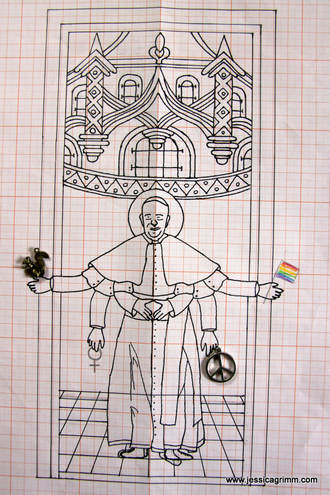





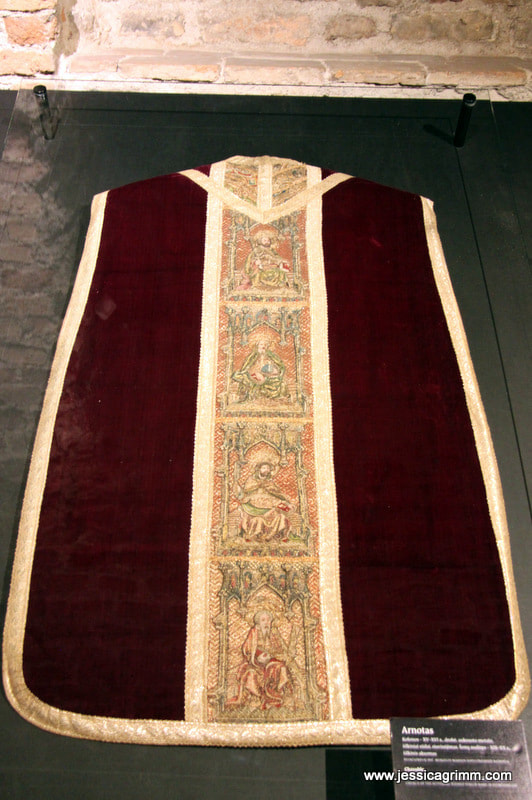
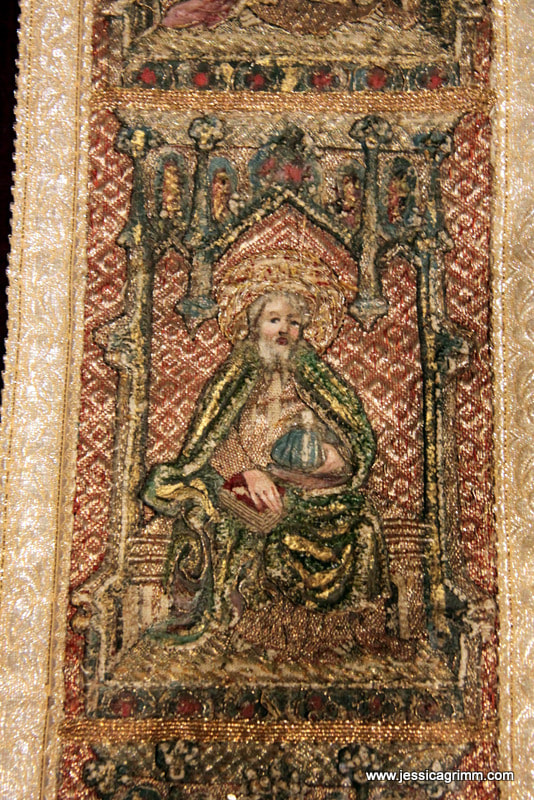



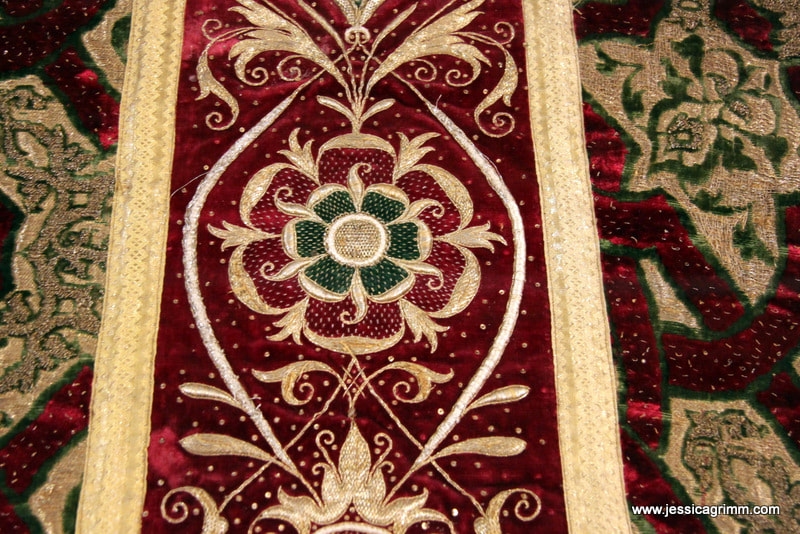

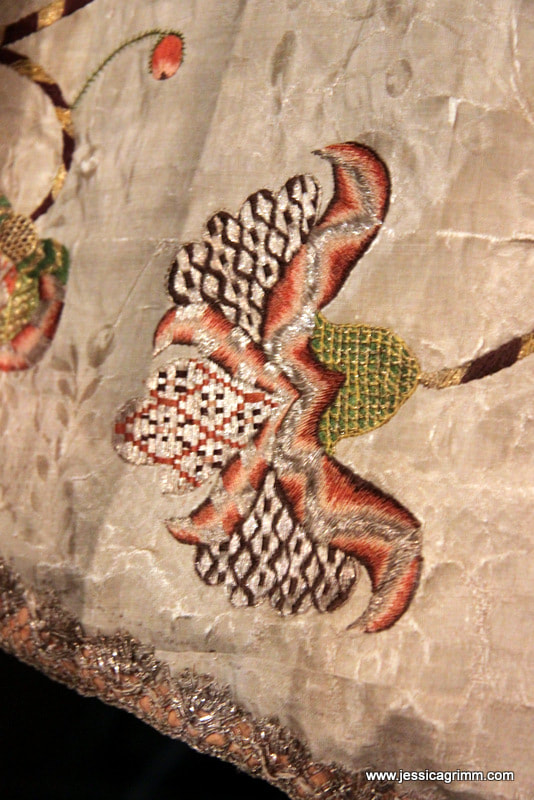











 RSS Feed
RSS Feed